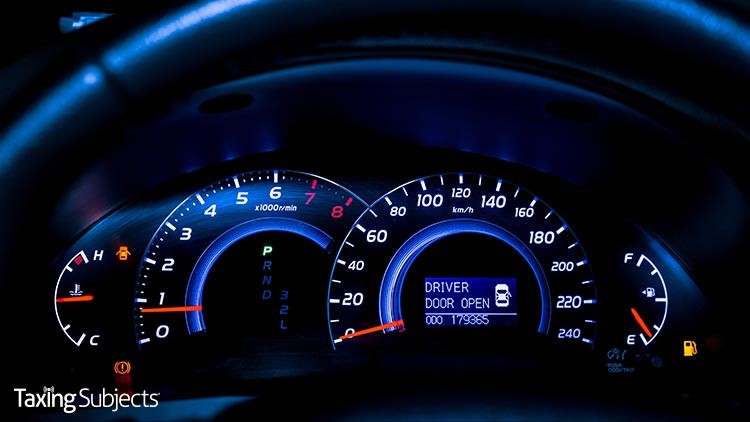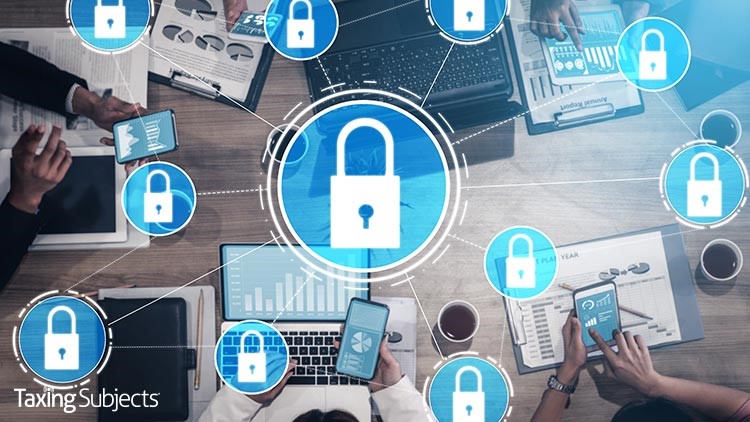by | Jan 29, 2020 | Tax Tips and News
From Uber to AirBnB, Lyft to TaskRabbit, more Americans are getting involved in the gig economy. Whether their involvement is just a side hustle or the main event, taxpayers can find income earned in this way can affect their tax returns—and it’s not always in a positive way.
The Internal Revenue Service says a little pre-planning can help gig economy workers be ready when it’s time to file their taxes.
Defining the Gig Economy
The gig economy is known by a few different names; it has also been called the on-demand economy, the sharing economy or the access economy. People involved in the gig economy may earn income as a freelancer, independent worker or employee. They use technology to provide goods or services. This includes things like renting out a home or spare bedroom and providing car rides.
There are a few things taxpayers should know about the gig economy and taxes:
- Money earned through this work is usually taxable.
- There are tax implications for both the company providing the platform and the individual performing the services.
- This income is usually taxable even if the:
o Taxpayer providing the service doesn’t receive an information return, like a Form 1099-MISC, Form 1099-K, or Form W-2.
o Activity is only part-time or side work.
o Taxpayer is paid in cash.
- People working in the gig economy are generally required to pay:
o Income taxes.
o Federal Insurance Contribution Act or Self-employment Contribution Act tax.
o Additional Medicare taxes.
Independent contractors may be able to deduct their business expenses, but they should double-check IRS rules when it comes to deducting expenses relating to use of things like their car or home. Remember to always keep records of business expenses.
Special rules apply to rental property when it’s also used as a residence during the tax year. Taxpayers should remember that rental income is generally fully taxable.
Workers who don’t have taxes withheld from their side hustle pay have two choices to pay their taxes in advance. Gig economy workers who have another job where the employer withholds taxes from their paycheck can fill out and submit a new Form W-4. This is done to request that the withholding employer sets aside an additional amount in order to cover taxes owed on the gig economy income.
Another way to stay on the good side of the IRS is to make quarterly estimated tax payments. This way, the taxpayer can pay taxes and any self-employment taxes owed throughout the year.
– Story provided by TaxingSubjects.com
by | Jan 17, 2020 | Tax Tips and News
What is the Gig Economy Tax Center?
Freelancers aren’t a new part of the workforce, but the rapid growth of contract labor has popularized terms like “gig economy” and “on-demand work.” To help taxpayers, the Internal Revenue Service unveiled a new online resource: the Gig Economy Tax Center.
The IRS explains that the gig economy largely gained momentum through app-driven services: “The gig economy … usually includes businesses that operate an app or website to connect people to provide services to customers. While there are many types of gig economy businesses, ride-sharing and home rentals are two of the most popular.”
Taxpayers accustomed to earning their income as an employee might not realize they need to keep track of the extra money generated by their weekend Uber work: “Many don’t receive Form W-2s, 1099s, or other information returns for their work … [despite the fact that] income from these sources is generally taxable, regardless of whether workers receive information returns.” Further, newly minted freelancers also might not realize there are other responsibilities that come with taking on contracted work.
The IRS hopes to address these awareness problems with the Gig Economy Tax Center, which will help fill in the blanks on a number of freelance tax issues:
- Filing requirements
- Making quarterly estimated income tax payments
- Paying self-employment taxes
- Paying FICA, Medicare, and Additional Medicare
- Deductible business expenses
- Special rules for reporting vacation home rentals
While these resources are not a replacement for a qualified tax professional, they can be an excellent supplement for taxpayers to lean on when putting together their information packet.
How do I use the Gig Economy Tax Center?
The first thing you see after navigating to the Gig Economy Tax Center are subheadings addressing basic gig economy topics—“What is the Gig Economy?,” “Gig Economy Income is Taxable,” “What is Gig Work?”—and two blue buttons in the middle of the page: Manage Taxes for Your Gig Work and Digital Platforms for Businesses.
Manage Taxes for Your Gig Work provides a number of resources specific to independent contractors:
- Accordion menu containing a to-do list that includes links to relevant publications and forms for topics like record keeping, making payments, and preparing tax information for filing a tax return
- Help menu with links to pages that explain IRS notices, the 1099-K, and how to determine if you’re an independent contractor or an employee
- Estimated tax information, like due dates and a Make a Payment button that links to the “Paying Your Taxes” page
Digital Platforms for Businesses has information tailored to taxpayers who “operate a digital platform, marketplace, or business in the gig economy.” At first glance, this page looks sparse when compared to Manage Taxes for Your Gig Work, but the accordion menu contains information for four important business topics: “Classify Workers,” “Report Payments,” “File and Pay Taxes,” and “Help Workers Meet Their Tax Obligations.”
Sources: IR-2020-04; “Gig Economy Tax Center”
– Story provided by TaxingSubjects.com
by | Jan 16, 2020 | Tax Tips and News
Updated January 15, 2020: We incorrectly listed the standard mileage rate for business use as 5 cents per mile.
The Internal Revenue Service has set the optional standard mileage rates for 2020. These rates are used to figure the deductible costs of operating a vehicle for business, charitable, medical or moving purposes.
Beginning Jan. 1, 2020, the standard mileage rates for the use of a car (also vans, pickups or panel trucks) will be:
- 57.5 cents per mile driven for business use, down one half of a cent from the rate for 2019,
- 17 cents per mile driven for medical or moving purposes, down three cents from the rate for 2019, and
- 14 cents per mile driven in service of charitable organizations.
The business mileage rate decreased one half of a cent for business travel driven and three cents for medical and certain moving expense from the rates for 2019. The charitable rate is set by statute and remains unchanged.
Deductions Eliminated by Tax Reform
The Tax Cuts and Jobs Act eliminated miscellaneous itemized deductions for unreimbursed employee travel expenses and moving expenses. Only members of the Armed Forces on active duty, who move under orders to a permanent change of station, qualify for a moving expense deduction. Rev. Proc. 2019-46 has more details.
The business standard mileage rate is based on an annual study of the fixed and variable costs of operating a vehicle. The medical and moving rates are based on variable costs only.
Taxpayers continue to have the option of using the actual costs of using their vehicle rather than the standard mileage rates.
Caveats
The IRS has a few cautions for taxpayers and tax preparers alike when it comes to using mileage rates to calculate the deduction.
“A taxpayer may not use the business standard mileage rate for a vehicle after using any depreciation method under the Modified Accelerated Cost Recovery System (MACRS) or after claiming a Section 179 deduction for that vehicle,” an IRS release states. “In addition, the business standard mileage rate cannot be used for more than five vehicles used simultaneously.”
These limitations are discussed in more detail in Rev. Proc. 2019-46.
For more on mileage rates and other questions, check out Notice 2020-05, posted on IRS.gov. The Notice contains the standard mileage rates, the amount a taxpayer must use in calculating reductions to basis for depreciation taken under the business standard mileage rate, and the maximum standard automobile cost that a taxpayer may use in figuring the allowance under a fixed and variable rate plan.
For employer-provided vehicles, the Notice provides the maximum fair market value of automobiles first made available to employees for personal use in calendar year 2020 for which employers may use the fleet-average valuation rule in § 1.61-21(d)(5)(v) or the vehicle cents-per-mile valuation rule in § 1.61-21(e).
– Story provided by TaxingSubjects.com
by | Jan 13, 2020 | Tax Tips and News
The second day of National Tax Security Awareness Week saw the Internal Revenue Service spotlight common signs of tax-related identity theft phishing scams.
As one of the most common data-security threats faced by taxpayers and tax professionals alike, phishing scams take many forms. While they can appear as an email, website, phone call, or printed letter, phishing scams tend to use similar tactics—and learning those telltale signs is one way to protect yourself.
Luckily, phishing scam basics is the focus of today’s IRS press release.
What is a phishing scam?
Phishing scams are unsolicited communications from identity thieves who want to trick you into giving them your personally identifiable information (PII) or money. As the IRS points out, “the most common way thieves steal identities is simply by asking for it.”
The basic gimmick is that identity thieves pose as a representative from an organization that you trust, like “a bank, a favorite retailer, or even a tax professional.” Fraudsters wager that you are more likely to believe the request for your Social Security Number is legitimate if it appears to come from the IRS.
What are the signs of a phishing scam?
Phishing scams tend to seem “urgent,” the IRS warns. They do this by making you believe there’s a problem that needs to be solved immediately, like paying your tax bill or updating your account information. But that’s just the hook.
To get victims to provide their PII without thinking twice, scammers tend to ask for it directly or “[instruct] the receiver to open an embedded link or download an attachment.” Links may send you to a compromised website that is designed to trick you into providing you information by filling out a form, and downloaded files can contain malware that tracks what you do on your computer—like what you type when you access your bank account.
What should I do if I receive a phishing email?
If you suspect you have received a phishing email, the IRS says you need to resist the urge to respond. Taxpayers who are more vulnerable to these urgent requests—like a someone who knows he owes money to the IRS—can contact the IRS directly via their official phone number or by “[registering] at the official IRS.gov website and [checking] their account balance.”
Once you’re confident the request is a scam, report the incident to phishing@irs.gov. The IRS uses this information to improve their catalogue of phishing scams, which they use to warn taxpayers about the most recent scams making the rounds. After all, it’s harder for fraudsters to trick people who are wise to their schemes.
Should I click links on social media?
Identity thieves have started posting links on social media platforms. Someone who is practices good security habits with their personal and work email might not be as cautious when they see a link on Facebook or Twitter.
The IRS has the following advice: “Do not open links from social media unless you are certain of the source.” That advice extends to every platform where you might encounter a link.
What’s next for National Tax Security Awareness Week?
Tomorrow, the IRS will cover another key aspect of data security: creating secure passwords.
Source: IR-2019-195
– Story provided by TaxingSubjects.com
by | Jan 13, 2020 | Tax Tips and News
Passwords are a ubiquitous part of life in the Digital Age, but many of us aren’t particularly good at making them. That’s why the Security Summit is highlighting tips for creating strong passwords on the third day of National Tax Security Awareness Week.
The IRS press release opened with a nod to the frenetic nature of the holiday shopping season, a time when taxpayers across the US access online accounts to take advantage of sales. Unfortunately, cybercriminals know that many of those accounts store personally identifiable information (PII) and financial data.
Considering how often taxpayers save their payment information on retailers’ websites—and just how many of those sites they’re frequently logging into from Thanksgiving to Christmas—it’s painfully obvious why protecting those accounts with a strong, secure password is essential.
How do I create a strong password?
The IRS and Security Summit partners recommend longer, but easy-to-remember passwords that are unique to every online account.
Part of that advice—creating a password that’s easy to remember—may seem at odds with what your third-party webmail accounts recommended a few years ago. Predictably, the shift is directly related to human habits.
“Experts previously suggested something like ‘PXro#)30,’ but now suggest a longer phrase like ‘SomethingYouCanRemember@30,’” the IRS says. “By using a phrase, users don’t have to write down their password and expose it to additional risk. Also, people may be more willing to use strong, longer passwords if it’s a phrase rather than random characters that are harder to remember.”
The rest of the password-creation tips covered account usernames, password storage, and programs designed to help users manage the exponential growth of online account passwords. Here’s the full list from the IRS:
- Use a minimum of eight characters; longer is better.
- Use a combination of letters, numbers and symbols in password phrases, i.e., UsePasswordPhrase@30.
- Avoid personal information or common passwords; use phrases instead.
- Change default or temporary passwords that come with accounts or devices.
- Do not reuse or update passwords. For example, changing Bgood!17 to Bgood!18 is not good enough; use unique usernames and passwords for accounts and devices.
- Do not use email addresses as usernames if that is an option.
- Store any password list in a secure location, such as a safe or locked file cabinet.
- Do not disclose passwords to anyone for any reason.
- When available, a password manager program can help track passwords for numerous accounts.
From that list, choosing a unique username that’s different from your email address might seem strange, but there are a few reasons for that recommendation:
- Knowing an email address gives identity thieves another piece of PII that they can use to build a credible profile for fraudulently applying for loans and credit cards.
- Having the email address in hand means being able to start the password recovery process.
- Using the same email address and password for everything—including bank account logins—is a pretty common mistake that cybercriminals are more than happy to leverage against victims.
Remember, taking every possible precaution can better protect you from cybercriminals.
Should I use multi-factor authentication to protect my online accounts?
Aside from creating unique passwords and user names, the Security Summit also recommends that taxpayers use multi-factor authentication to protect online accounts. For those who are unfamiliar with the term, multi-factor authentication is any process that adds another step to the account login process.
An account just protected by a password would be considered to have single-factor authentication. Accounts that have another step, like security questions or a code sent via text message that you have to enter during login, would be considered protected by multi-factor authentication.
The IRS says, “The idea behind multi-factor authentication is that a thief may be able to steal usernames and passwords, but it’s highly unlikely they also would have access to the mobile phone to receive a security code or confirmation to actually complete the login process.”
What’s the next topic for National Tax Security Awareness Week?
So far, the Security Summit has covered online shopping safety tips, how to spot phishing scams, and password-creation tips. On Thursday, the Summit will cover how big a business needs to be for cybercriminals to target them.
Source: IR-2019-196
– Story provided by TaxingSubjects.com





